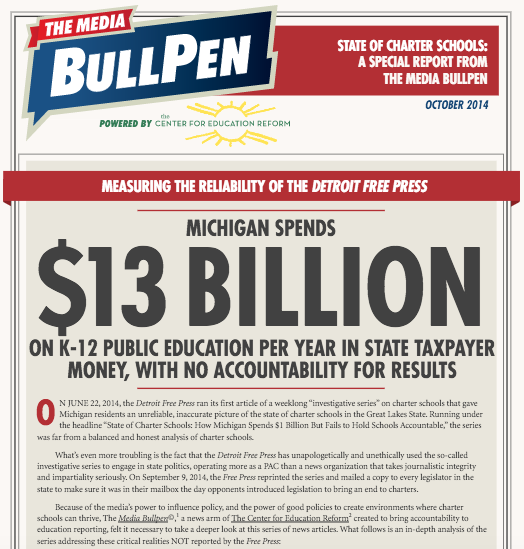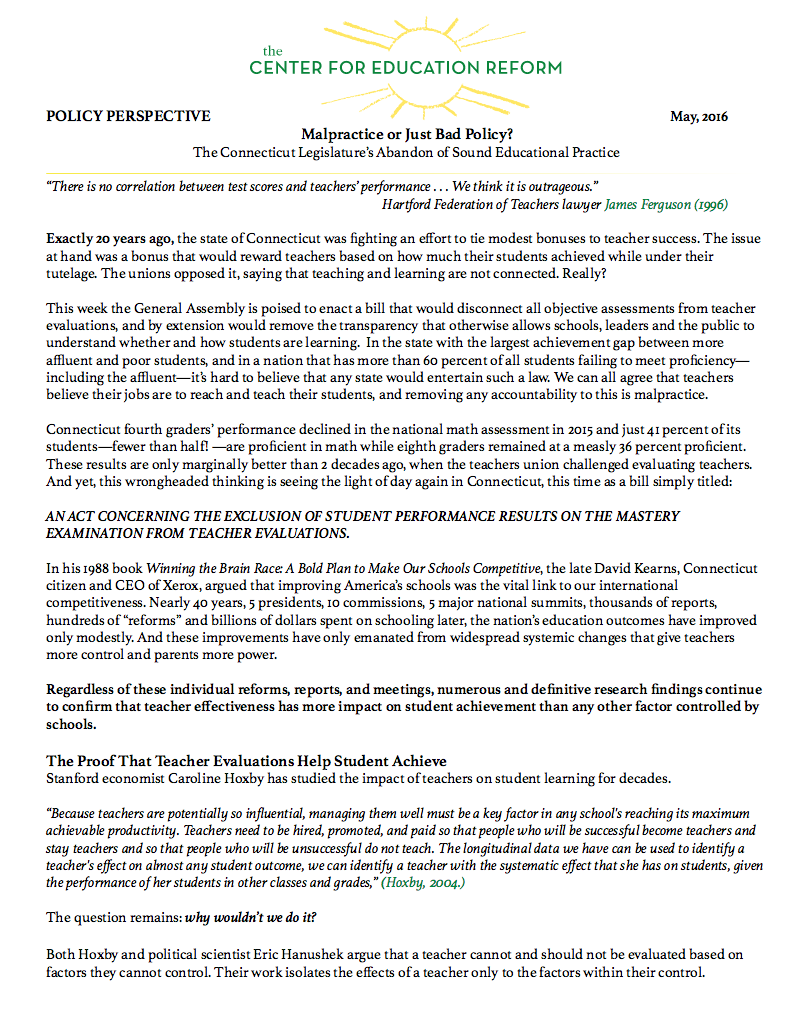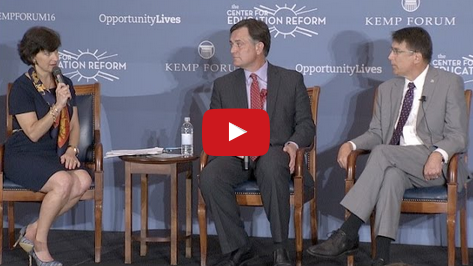by Jeanne Allen
Investor’s Business Daily
May 20, 2016
The latest report by the National Assessment of Educational Progress (NAEP) is an urgent reminder of the crisis in U.S. education, with just 37% of all 12th graders making the grade in reading and 25% in math. And the achievement gap is growing among minority kids.
White and Asian students score as many as 40 percentage points higher than black, Hispanic and other minority students. The number of 12th grade students failing to demonstrate even basic levels of math and reading achievement increased from the last time the test was administered in 2013.
NAEP data, combined with information on college readiness, presents a clear picture on the need to improve and expand access to innovative learning opportunities. Despite the U.S. graduation rate being at an all-time high of 81%, graduation rates clearly have little relevance to achievement, with 12th grade 2015 math and reading results revealing that less than half of graduating seniors are prepared for college coursework.
While 42% of 12th graders report being accepted to four-year colleges at the time of the NAEP assessment, research reveals that 20% of first-time students at four-year colleges require remedial coursework. At the community college level, approximately 60% of students enroll in at least one remedial course.
While the dropout rate has slowed, this data doesn’t even account for those who don’t make it to 12th grade. Eighty percent of the U.S. prison population is made up of high school dropouts. We must think creatively about how to create unique learning opportunities for students we have yet to reach.
Amid these grim statistics, we can find hope in the fact that more and more entrepreneurs and policymakers are doing extraordinary things and breaking the mold to foster innovative learning opportunities that lead to better outcomes and results for our nation’s children.
Twenty-five years ago, policymakers on both sides of the aisle in Minnesota came together to craft a novel policy, a charter school law, to allow for a new type of public school to solve the persistent issue of underachieving schools and a growing dropout problem.
Today, there are more than 6,800 charter schools educating more than 3 million students. These schools were the first among public schools to show that innovations in teaching and learning can lead to student achievement, with results that outpace most comparable conventional schools — and they accomplished this feat despite adverse funding conditions.
As lawmakers enact more laws that provide children access to greater opportunities to achieve upward mobility, there is also unprecedented application of technological, teaching and system innovations being tested and applied.
This is the era in which schools find themselves, and yet the Nation’s Report Card demonstrates that the majority of schools have still not caught up with the pace of advancement sweeping other flexible schooling structures.
Most students are still sitting in rows and amid systems created when education was simpler, flatter and less homogeneous, and well before the age of labor contracts and large bureaucracies dictating the bulk of actions that a school must undertake daily.
To apply what works demands not only a reset on this outdated system, but meaningful measures that test and evaluate that which is working. NAEP provides only an aggregated snapshot of academic achievement from samples of students across states, and does not capture individual student progress or outcomes.
We do not have another 25 years to wait for the flexibility to apply the pathbreaking research and innovations that exist today to the schools of tomorrow. NAEP’s ongoing assessment of students does not change dramatically, for better or worse, year after year.
While it is unwise to use NAEP scores to make speculations surrounding specific policies, due to the nature of the data, we know that unleashing the power of innovation and opportunity can drive success for even the most disadvantaged students.
Policymakers must free the schools. Schools must update their infrastructure to make learning more personalized in an increasingly technological and global world. And they must do so in a way that does not shut out access for those traditionally underserved by our education system.
Resetting the landscape for structural change in education requires providing maximum opportunities for kids, teachers and families, and allowing flexibility for innovations to be tested and applied.
Allen is Founder and CEO of The Center for Education Reform in Washington, D.C.











 nd learning that she did had it not been for the pressure caused by the District’s vibrant charter school community.
nd learning that she did had it not been for the pressure caused by the District’s vibrant charter school community.


 EVEN AFFLUENT KIDS NEED HELP. It’s long been the case that parents of students in “good” or seemingly “great” schools don’t think they have any issues, and as a result, cannot really relate to those whose schools are demonstrably worse. The problem is — and always has been — that even our better schools are underperforming. According to a recent report from Education Reform Now, of the more than half a million rising college freshman who enroll in remedial courses,
EVEN AFFLUENT KIDS NEED HELP. It’s long been the case that parents of students in “good” or seemingly “great” schools don’t think they have any issues, and as a result, cannot really relate to those whose schools are demonstrably worse. The problem is — and always has been — that even our better schools are underperforming. According to a recent report from Education Reform Now, of the more than half a million rising college freshman who enroll in remedial courses, 
 O school district filed a lawsuit claiming that the state has overpaid charter schools via desegregation tax revenue. The districts’ greed posits that the
O school district filed a lawsuit claiming that the state has overpaid charter schools via desegregation tax revenue. The districts’ greed posits that the